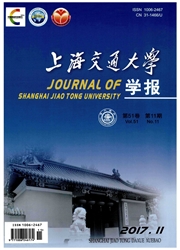

 中文摘要:
中文摘要:
研究了槽铣过程进给方向毛刺的形成机理以及主动控制毛刺大小的方法.通过改变垂直铣削中的出刀角度和斜铣中的斜切角度来改变工件的刚性、测量出刀位置和侧面出刀位置的最大毛刺高度与厚度.结果表明,毛刺大小随着加工速度的增加而减小;摩擦角随着出刀角度以及斜切角度的增大而增大,从而导致毛刺尺寸增大.基于实验研究结果,提出了4种有效的主动控制毛刺大小的方法.研究表明,该控制方法对于铝合金及其他轻金属的精密槽铣加工有指导意义.
 英文摘要:
英文摘要:
This paper investigated the mechanism of burr formation on the feed direction based on the experimental research in slot milling M-alloy. Experiments of orthogonal milling with various exit angles and oblique milling with various oblique cutting angles were conducted. Maximum height and thickness of exit burr and exit side burr were measured. The experimental results show that the friction angle becomes larger with the exit angle and oblique cutting angle. The exit burr size increases with the exit angle, and exit side burr size on up milling side increases with the oblique cutting angle. Based on these results, four initi- ative control methods were presented to reduce burr size. This research is benefit to the precision machining of M-alloy and other light metals.
 同期刊论文项目
同期刊论文项目
 同项目期刊论文
同项目期刊论文
 Statistical research on the effects of cutting edge preparation on face milling of austenitic stainl
Statistical research on the effects of cutting edge preparation on face milling of austenitic stainl 期刊信息
期刊信息
